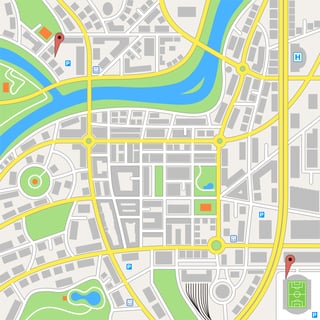Training School Bus Drivers for City Driving: Five Tips
published on June 07, 2024 by Sonia Mastros
Student Tracking Software, school bus routing software, school bus driver training, route efficiency, school bus route optimization
 As difficult and frustrating as city driving can be in an automobile, the problems are multiplied when driving a school bus. Buses can be up to 45 feet long, which makes maneuvering them around city corners a real challenge. Plus, with a full load of passengers on board, it’s easy for school bus drivers to become stressed out, which can diminish their effectiveness in an emergency.
As difficult and frustrating as city driving can be in an automobile, the problems are multiplied when driving a school bus. Buses can be up to 45 feet long, which makes maneuvering them around city corners a real challenge. Plus, with a full load of passengers on board, it’s easy for school bus drivers to become stressed out, which can diminish their effectiveness in an emergency.
The challenges your drivers face are going to be largely particular to your city. However, with proper training, there are certain strategies which will help mitigate the chances of problems while on city streets.
Five Focus Areas When Training City Bus Drivers
- Plan ahead for turns - The wide turn radius of a bus can make it difficult to get into the proper lane in time for a turn. Your drivers should be aware of turns coming up and try to be properly positioned a couple blocks ahead of time.
- Minimize left turns - Many professional transportation companies, such as UPS have their drivers avoid left turns whenever possible. This is good advice for school bus drivers as well. Left turns increase gas use, as well as increasing the odds of side-on collisions. We try to avoid left turns in our own bus routing software for this very reason.
- Brake early for lights - Did you know that traffic light cameras actually increase the number of low-damage accidents in a city? Drivers routinely slam on their brakes to avoid running the light, causing rear-enders and other minor collisions. Your drivers should be very aware of stoplights and brake early, in case the car in front of them stops suddenly.
- Add more mirrors - Blind spots are always a driving danger, but they are most dangerous in city driving. If your drivers notice any blind spots in their rear-view or in front of the bus, add more mirrors. The benefits far outweigh the costs.
- Utilize in-cab GPS systems if possible - Accidents and detours are a fact of life with city driving, but drivers should be trained to avoid them whenever possible. In-cab GPS units can allow drivers to make changes to their route while on the road to avoid dangerous situations.
Improve City Safety with Better Routing
Another way to give your school bus drivers more support is by giving them the safest routes possible. Computer-controlled bus routing software can minimize their time in dense inner-city traffic, avoid dangerous areas, and improve safety overall.
To learn more, just contact BusBoss and request a demo!
In the meantime, how does your district handle training for city driving? Let us know in the comments!






